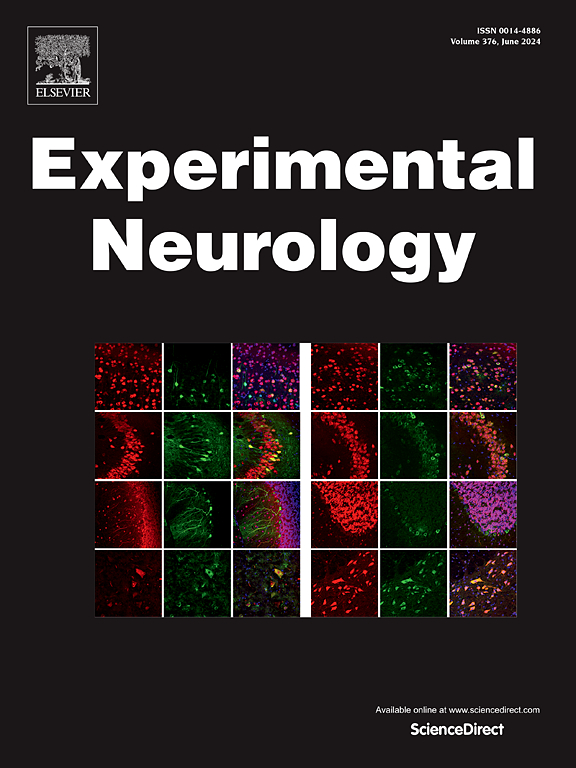Identification of NMT1/MA/VPS15 signal pathway as potential therapeutic target in rat cerebral ischemia injury
IF 4.6
2区 医学
Q1 NEUROSCIENCES
引用次数: 0
Abstract
Fatty acids play a critical role in cerebral ischemia injury through the regulation of lipid metabolism and inflammatory signaling. Myristic acid (MA), a 14‑carbon saturated fatty acid, serves as a substrate of N-myristoyltransferase 1 (NMT1) and modulates protein function and subcellular localization via myristoylation. We show here that intraperitoneal injection of MA has no effect on the infarct volume after rat cerebral ischemia-reperfusion (I/R) injury. However, our results reveal that the level of MA within the penumbra of ischemic brain is increased and that ischemia-induced downregulation of NMT1 is responsible for the increase of MA. We further show that upregulation of MA by knockdown of NMT1 exacerbates cerebral ischemia injury, while downregulation of MA by BCtDCS (bilateral and cathodal transcranial direct current stimulation) protects against cerebral ischemia injury. Furthermore, we demonstrate that MA reduces the expression of VPS15 (phosphoinositide 3-kinase regulatory subunit 4) to exacerbate cerebral ischemia injury, and that NMT1 acts on MA to regulate VPS15 expression in the ischemic cerebral cortex. Together, this study provides the first evidence identifying NMT1/MA/VPS15 signal pathway as potential target for stroke therapy and suggests that BCtDCS may act on MA-dependent signal pathway to confer neuroprotection.

NMT1/MA/VPS15信号通路作为大鼠脑缺血损伤潜在治疗靶点的鉴定
脂肪酸通过调节脂质代谢和炎症信号传导在脑缺血损伤中发挥着关键作用。肉豆蔻酸(MA)是一种 14 碳饱和脂肪酸,是 N-肉豆蔻酰基转移酶 1(NMT1)的底物,通过肉豆蔻酰化调节蛋白质的功能和亚细胞定位。我们的研究表明,腹腔注射 MA 对大鼠脑缺血再灌注(I/R)损伤后的梗死体积没有影响。然而,我们的研究结果表明,缺血脑半影区内的 MA 水平升高,而缺血诱导的 NMT1 下调是 MA 水平升高的原因。我们进一步发现,通过敲除 NMT1 上调 MA 会加重脑缺血损伤,而通过 BCtDCS(双侧和阴极经颅直流电刺激)下调 MA 可保护脑缺血损伤。此外,我们还证明了 MA 可降低 VPS15(磷脂酰肌醇 3- 激酶调节亚基 4)的表达,从而加重脑缺血损伤,而 NMT1 可作用于 MA 以调节缺血大脑皮层中 VPS15 的表达。总之,这项研究首次证明了NMT1/MA/VPS15信号通路是中风治疗的潜在靶点,并提示BCTDCS可能作用于MA依赖的信号通路,从而提供神经保护。
本文章由计算机程序翻译,如有差异,请以英文原文为准。
求助全文
约1分钟内获得全文
求助全文
来源期刊

Experimental Neurology
医学-神经科学
CiteScore
10.10
自引率
3.80%
发文量
258
审稿时长
42 days
期刊介绍:
Experimental Neurology, a Journal of Neuroscience Research, publishes original research in neuroscience with a particular emphasis on novel findings in neural development, regeneration, plasticity and transplantation. The journal has focused on research concerning basic mechanisms underlying neurological disorders.
 求助内容:
求助内容: 应助结果提醒方式:
应助结果提醒方式:


